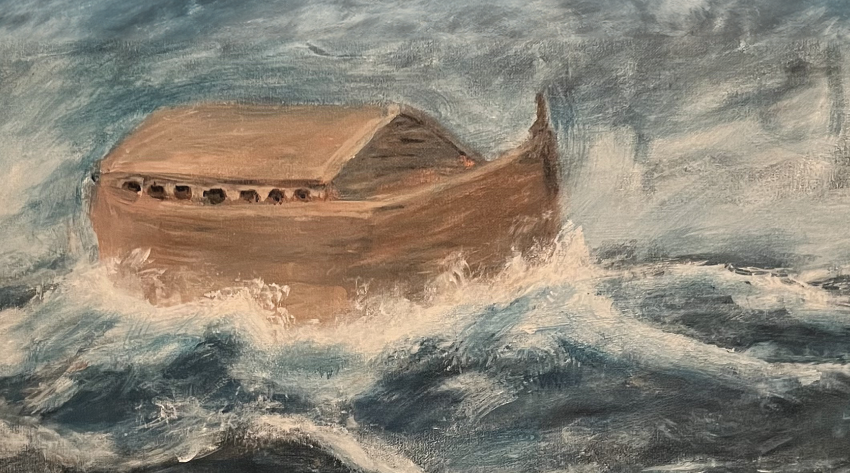
Anxiety-Management
We have described the nature of a VUCA-Plus environment and the unique leadership challenges associated with the anxiety evoked in this environment. We are ready to consider ways in which a leader can contain this anxiety and transform (metabolize) this anxiety to re-introduce it in manageable form to other members of their organization.
We turn first to the nature and variety of organizational containers and then consider the remarkable process of metabolism as originally described by the psychoanalytically oriented object relations theorist of the Tavistock Institute in London.
Anxiety and the Container
In his work as a psychotherapist (particularly in group settings), Wilfred Bion described the nature of containment and metabolism of anxiety.[viii] Bion suggested in several different ways that effective leaders (initially as group therapy facilitators) will contain and then metabolize the anxiety of those with whom they are working. With its metabolism, the anxiety can be reintroduced into the therapy session in a form and manner that is more easily engaged by a client (whether in an individual therapy session or in a group therapy session).
Bion, and other psychologists influenced by his work, recognized that the same process is engaged in organization. The effective leader serves as barrier between the threatening and anxiety-producing outside world and the inner world of the organization. In many ways, the therapist or organizational leader operates in the same way as an effective parent who must provide a buffer for their children. Both the parent and child confront many anxiety-filled challenges—especially those associated with balancing the protection of the child, on the one hand, with providing the child, on the other hand, with multiple opportunities to develop in their capacity to confront and adapt to their ever-expanding world.
This recipe offered by Bion to therapists, group facilitators, organizational leaders (and parents) is all well and good, but what does it really mean and how does a leader (therapist, facilitator or parent) go about engaging the multi-faceted role of container, metabolizer and re-introducer of the anxiety?
The Nature of Containment
What does it mean to contain anxiety? More generally, what is the nature of psychological containers in our life and in the life of our organization? We begin by addressing the second question and then considering how the containment of anxiety works. We will be making the case that containment can occur in many ways and in many settings. In essence, containment is about finding sanctuary in one’s life—especially when confronting the challenges of VUCA-Plus.
Vulnerability, uncertainty, complexity, ambiguity, turbulence and contradiction are not new to us living in the 21st Century. And we are not the first people to yearn for sanctuary. Back in the 1930s, with World War II looming in the near future and the world limping its way out of a major recession, there was a strong need for sanctuary– as captured in the popular film, Lost Horizons. Ronald Colman played the role of a very successful British statesman who is kidnapped and taken to a remote land called “Shangri-La.” For Colman, as for many of us, this location held great attraction. It was free of pain and strife.
Shangri-La also provided an opportunity for reflection on the complex and turbulent world outside, while giving those who entered its cloistered walls (in this case, a hidden valley) the opportunity for personal growth and renewal. Colman, like many of us who have created or stumbled into “Shangri-La,” found that the hardest part is leaving and returning to a world that he no longer appreciated. However, “Shangri-La” like all sanctuaries exists precisely because of our need to remain engaged in an active life in which we address the critical needs and concerns of our family, our organization and our community.
The Varieties of Containment and Sanctuary
Psychological containers come in many forms and there are many types of sanctuary. We turn now to a brief and more systematic exploration of five types of containers—and sanctuaries. They are personal psychic containers and containers existing within relationships. Containers can also be defined by temporary boundaries: events can serve as containers. Special locations are noteworthy as containers and sanctuaries.
Finally—and most directly relevant to this set of fundamental concepts–certain leadership functions can provide containment of anxiety. Leadership, in turn, often works alongside one other container (that might be the most important within an organizational setting). This final type of container is the culture of the organizations. In turn first to the most personal type of container.
Personal Imagery as a Container of Anxiety: In a beautifully poignant song (“And So It Goes”), written by the popular singer, Billy Joel, a sanctuary is described that exists in every person’s heart.[ix] This part of our heart will always be “safe and strong.” It is where we “heal the wounds from lovers past/Until a new one comes along.” Sanctuaries of a similar nature exist in our heart and hopefully are supported by our organizations and society as a means of healing other wounds and providing space and time for needed reflection and inquiry. In our world of VUCA-PLUS, there is a great need for Billy Joel’s “safe and strong” sanctuary.
Download Article 1K Club


















